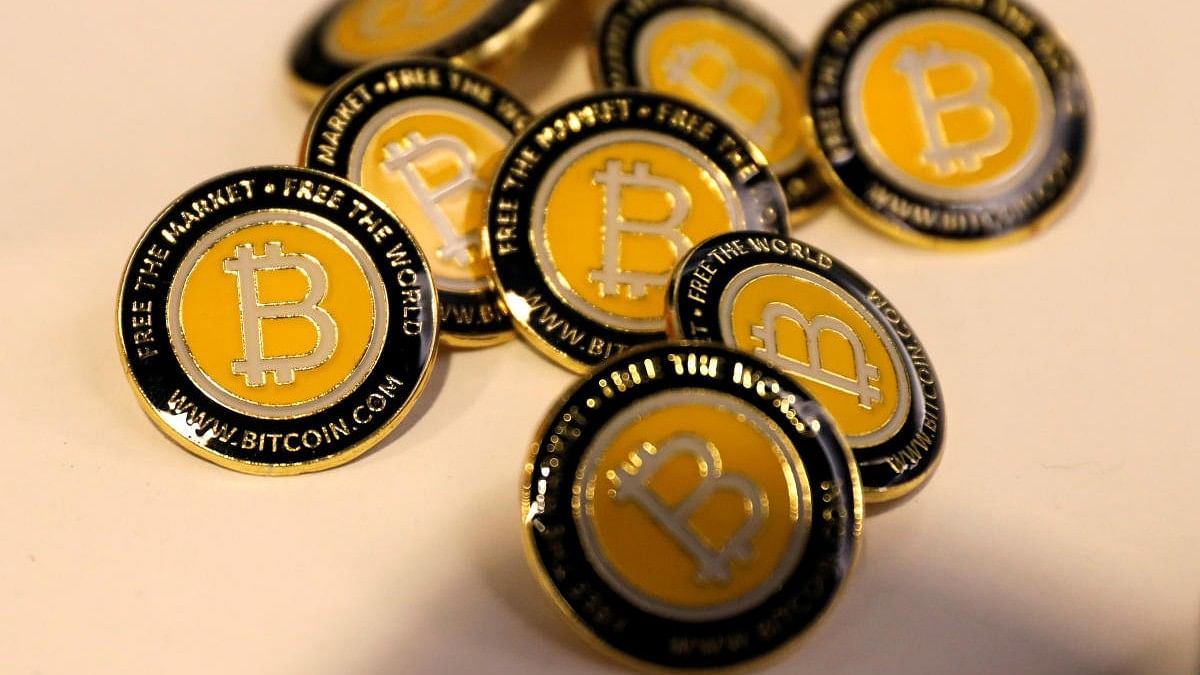
Image for representation only.
Credit: Reuters File Photo
By Andy Mukherjee
Most people see “blockchain” and “funds” in the same sentence and immediately think of pools of money betting on cryptocurrencies like Bitcoin and Ether. That isn’t how Singapore sees the utility of distributed ledgers.
It has taken a less glamorous view, which may nevertheless be more useful. The Asian financial center has more than 1,200 asset management companies supervising S$146 billion ($112 billion) in so-called collective investment schemes. And unlike equities, where dealing rooms in the city-state have recently had to cope with the arrival of a shorter settlement cycle in the US, the industry routinely takes a leisurely week or longer to move pension savings into mutual funds.
The Singaporean customers aren’t to be blamed for this sluggishness. They put in their buy orders for funds on a mobile app on an online platform, just like they would with a stock. But that click only begins a back-and-forth of faxes and emails between asset managers and their distributors, fund administrators, trustees, and registrars.
Unhappy with the status quo, the Monetary Authority of Singapore came up with a roadmap for transforming the island-nation’s financial services industry by 2025. A specific plan was to digitalize the infrastructure. Marketnode, a joint venture of the city’s stock exchange and Temasek Holdings Pte, the investment firm behind $288 billion of Singapore’s state assets, was given the job of operating the new highway on which money and fund units can move faster.
Last quarter, Fundnode, the platform, went live for cash orders, reducing their settlement time to two business days after the transaction, or T+2 in industry parlance. Before the end of the year, the savings parked with Singapore’s state-run and privately operated pension programs will also be able to move in and out of mutual funds with equal ease.
The experimentation with efficiency comes at a delicate time for Singapore’s reputation as a financial center. A record S$3 billion money-laundering scandal in which a group of criminals from China laundered proceeds from online gambling through at least 16 financial institutions has made both banks and authorities extra cautious about illicit flows.
The city’s stance toward cryptocurrencies has also tightened, especially when it comes to protecting the local retail investor. When Singapore hosts its Formula One night race on Sept. 22, there will be no crypto advertising along the track. It was banned two years ago, shortly before the spectacular collapse of Sam Bankman-Fried’s FTX empire.
But blockchains, especially those that are restricted to a small group of participants, can do much more than mint tokens for speculation. A big part of the effort in crunching fund settlements has been spent on replacing manual processes with smart contracts, or self-executing computer code. That has, in turn, required bringing scattered, unstructured data into a unified repository, the ledger everyone can track “as a single source of truth,” says Rehan Ahmed, Marketnode’s chief executive officer.
It’s painstaking work, but with enormous potential. Sure, Singapore has 0.6% of the world’s millionaires. Still, the savings of 6 million people are a drop in the bucket of wealth that comes to it from the global rich. Overall, asset managers in the financial center manage S$5.4 trillion, of which 77% is sourced from outside, and 89% is invested overseas. If the city-state can demonstrate a role for distributed ledgers in mutual funds, it can pitch the new platform to the wider asset management industry.
Even that will be just the tip of the iceberg. As Ahmed explains, large private banks issue about 500 structured products in a day to their clients. Squeeze the 10-to-15-day settlement period, and high-net-worth individuals might be able to execute bespoke bets over shorter timeframes. An experiment under the Singapore monetary authority’s Project Guardian where HSBC Holdings Plc acted as the issuer of structured products on Marketnode’s platform, has resulted in a second product for the Singapore company. HSBC led the start-up’s Series A financing round in May.
Hong Kong and Singapore, the two Asian financial hubs, are charting their independent pathways. Hong Kong is likely to put e-HKD, a paperless version of its cash, in the hands of individuals, while Singapore has decided to sit out the global craze for retail central bank digital currencies, or CBDCs. It is, however, ahead in harnessing blockchain technology in the nuts and bolts of institutional finance. Temasek has cofounded another financial infrastructure startup, Partior. Its goal is to create a unified ledger that will cut counterparty risk from foreign-exchange trading.
There are also overlaps between the traditional rivals. Hong Kong wants to explore digital representations of everything from green bonds to electric-vehicle charging stations. Singapore isn’t far behind. Last year, it began five new pilots to take advantage of what Citigroup Inc. calls the “killer use case” of blockchain technology: a $4 trillion market for tokenization of financial and real-world assets by 2030.
The exotic part of the business will still be the wildly gyrating cryptocurrencies, or their calmer but still controversial cousins: stablecoins. In the engine room of finance, though, it’s not the coins but the technology behind them that’s coming into its own. Distributed ledgers and smart contracts are demonstrating their usefulness, even to those asset owners and intermediaries who don’t want to be anywhere near Bitcoin.